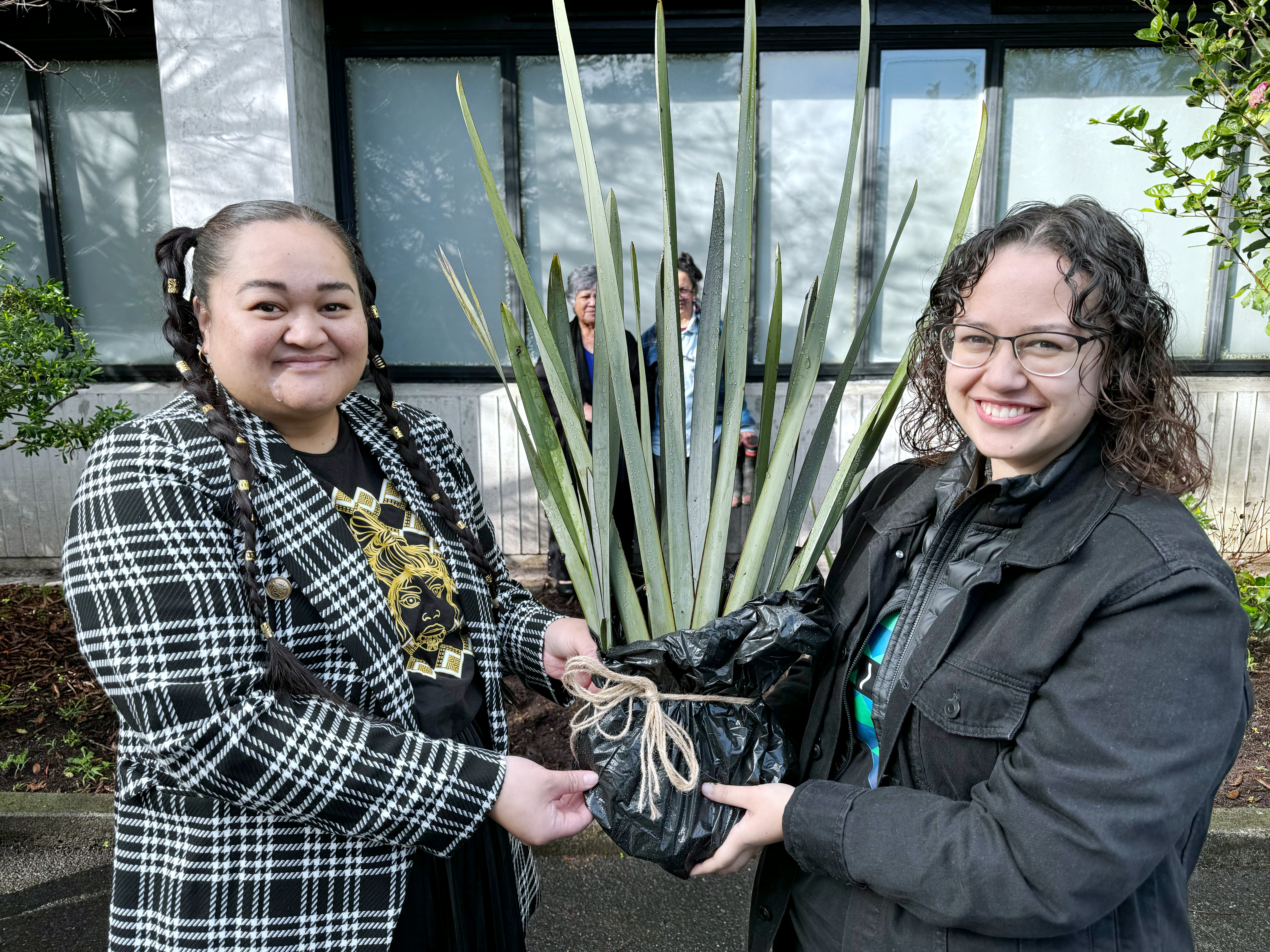Century old harakeke gifted to Wintec Māori Midwifery students as resource to make Muka Pito
Muka Pito, an alternative and traditional way to tie umbilical cords using native harakeke (flax), is becoming more common and sought after. When trying to find a harakeke resource to make Muka Pito, Wintec ākonga (students) and kaiako (tutors) have not had much success.

Left to right back: Alroy Walker, Faye Blossom, Janet Taiatini, Ada Te Huia, Rosemary Murray, and De Cleaver. Left to right front: Wintec Midwifery ākonga Sarah Richards and Hinemoa Mills.
But now, Wintec Māori midwifery ākonga have their very own harakeke plants to sustain this important traditional practice thanks to the Māori Women’s Welfare League (MWWL).
On Monday 17 June a local branch of MWWL donated two 100-year-old harakeke plants to Wintec, one was planted during a ceremony onsite at the Wintec City Campus and the other was to be planted offsite, in case the first one didn’t take to the whenua.
Harakeke is a traditional healing plant in Māori culture. The gel can be used to help with burns, boils and cuts, while the leaves can be wrapped around wounds like a bandage and the roots can help with stomach problems, colds and headaches.
But for our Māori midwifery ākonga, the leaves are key for what they need: Muka Pito, Muka – meaning the fibre inside of a harakeke leaf, Pito – meaning a bellybutton.
Muka Pito ties are a natural alternative to conventional umbilical cord clamps. They are easy to use, soft on babies skin and don’t get tangled up in nappies and clothing. Muka is also known for its antibacterial properties and because of this the pito heals very fast.
Janet Taiatini, who is part of the Te Ara o Hine-Tapu Ora programme has not had much success with identifying harakeke locally as a resource for tauira.
She and her students decided they needed to source their own plant that could be onsite.
“It’s great to have our own resource onsite for our midwifery students, whānau and community. We have 53 Māori tauira currently at Wintec and I’m so excited for them to have these so students can make Muka for themselves,” Janet said.

Wintec Midwifery ākonga Sarah Richards (left) and Hinemoa Mills (right) with the century old Harakeke.
Te Awamutu MWWL president Rosemary Murray said the three plants being donated were originally plants from Master weaver Dame Rangimārie Hetet(Te Kanawa).
“I’m really excited about how you might use these plants,” she said.
Rosemary said if for some reason they needed another resource she had a farm in mind in Ōtorohanga where she could take the students to harvest harakeke as well and learn about the varieties. The visitors shared kōrero rich in furthering the skills and level of commitment required.
Alongside Rosemary, three other representatives of the (MWWL), Faye Blossom, Yvonne Mita, and Ada Te Huia, presented the flax to staff, whānau, and students.
A ceremony for the planting, which took place on City Campus in the garden by D Block, was facilitated by Alroy Walker, Principal Academic Staff Member from Centre for Health and Social Practice.
“Due to implementation of traditional Māori practice within the midwifery field, the Wintec midwifery students and staff need access to harakeke. Today we get to plant our own plant. It’s all about being as natural as possible,” he said.
If you would like to learn more about our Midwifery pathways you can find more information here.
